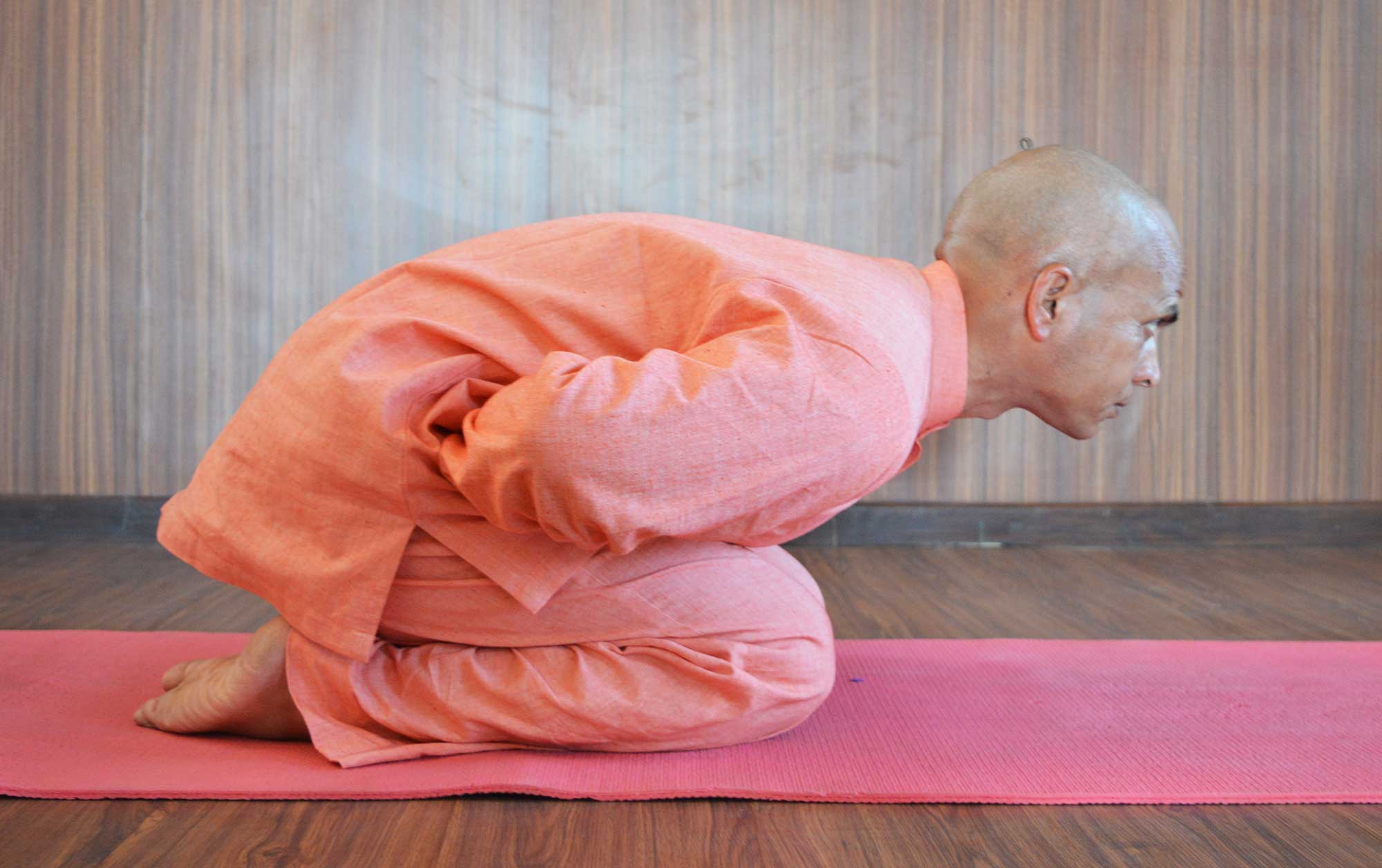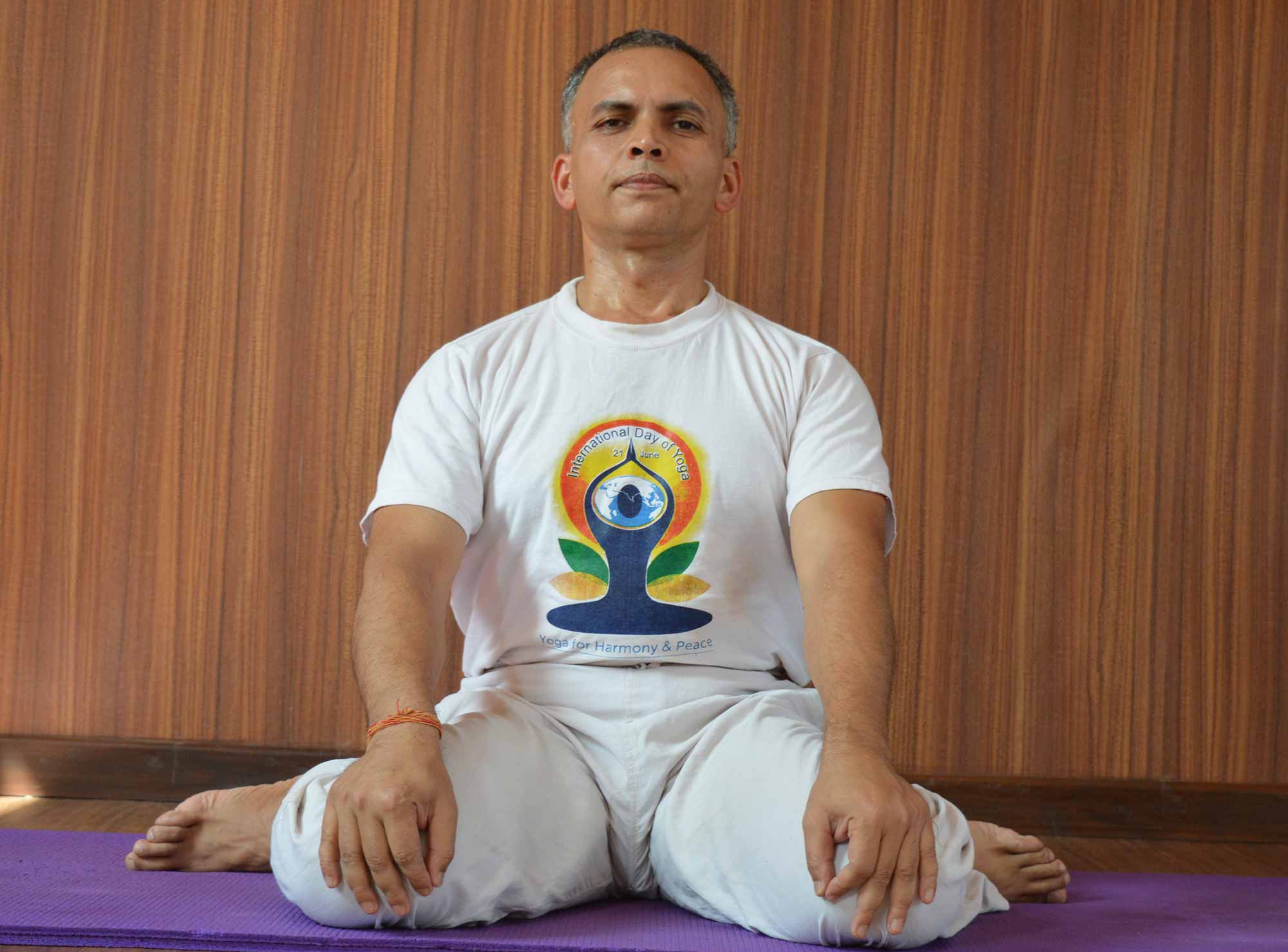
1 Jan 2021 HYN Himalayan Yoga Academy
“Prishthadeshe paadatalaavangushthau dvau cha samsprishet;
Jaanuyugmam purushkritya Saadhyenmandookaasanam !!2.34!!
Bring both feet to the back, join the big toes and keep both knees in front. Thus is performed Mandukaasana.
Mandukaasana (Sanskrit: मन्दुकासन; IAST: Mandukaasana), or Frog posture is a group of seated asanas in Hatha yoga and modern yoga as exercise, all of which put the body in a shape like that of a frog. Another frog-like pose is Bhekhasana.
In Sanskrit the word “Manduk” means frog. In this pose, your body posture resembles a frog, so that’s why this Asana is called Mandukaasana. Mandukaasana is a simple Asana that anyone, regardless of age, can practice. In Yoga, people use many variations of Mandukaasana.
According to the Gheraṇḍasaṃhitaa, Maṇḍukaasana is one of the 32 selected postures among the 8,400,000 total postures mentioned by Shiva. The Mandukaasana in the Gheranda Samhita is also called Manduki Mudra. Shiva mentions 8.4 million asanas, as many as there are species of animals. He considers 84 of these asanas important and recommends 32 poses for regular practice to gain merits in the world of mortal beings.
The 17th-century Gheraṇḍa saṃhitaa, which mentions Maṇḍuka-Aasana, is one of the three classic texts of Haṭha-yoga, a major branch of Yoga. It shares similarities with the Yoga system taught by Patañjali but claims its mythical founder as Matsyendranaatha. This Gheraṇḍa Saṃhitaa is an encyclopedic Sanskrit treatise that describes thirty-two such Aasanas. In English, Mandukaasana is also referred to as the frog pose.
Traditionally, Mandukaasana is believed to open the Mooladhaara (Root) and Svadisthana (sacral) chakra. These chakras are the center of stability, survival, foundations, stilling, then, creativity, pleasure and enjoyment. Activating it promotes focus, productivity, and inner acceptance.
Methods of Mandukaasana (In Gheranda Samhita) or, Manduki Mudra

- Sit comfortably on your yoga mat.
- Take a few deep and slow breaths to relax your body.
- Sit in Vajrasana or the Bhadrasana or Viraasana
- Ensure you separate the two legs and sit.
- Take the feet apart as much as possible.
- Your perineum should touch the yoga mat.
- You can use a cushion or blanket under the buttocks to support.
- Keep your body straight while doing this Mandukaasana or Manduki Mudra.
- Keep the eyes closed and the whole body should be relaxed.
- Ensure you keep your mouth closed throughout the practice.
- Rotate the tongue and touch the soft palate.
You can be in this mudra for about 3-5 minutes depending on your physical fitness and body flexibility.
You might get the nectar flowing from the brain to the mouth.
Reaping the benefits from this Mandukaasana or Manduki Mudra will take a lot of effort and time.
It comes with regular practice of meditation.
Steps of Mandukasana (Frog Pose) – as common Aasana

- Comfortably sit in Vajrasana (thunderbolt poses)
- Close the fists of both hands.
- While clenching the fists press your thumb inside with the fingers.
- While pressing the navel with your both fists exhale and bend forward.
- Hold the breath when you are in the position of bend forward and keep looking straight.
- Your chest will touch your thigh; Look straight and keep your eyes open
- Stay in this position for some time (hold the position as much as you can), Hold your breath if you can. Initially it will be difficult but you practice every day you will be able to do it for longer period. Or you can breathe slowly if you cannot hold your breath. inhale, and come back to starting position (Vajrasana).
- Now come back to original position in Vajrasan while simultaneously doing deep inhaling.
- Repeat this for three to five times as need and time.
Physical and mental Benefits of frog pose (Mandukaasana)
Mandukaasana gives you relief from diabetes, digestive disorders, and constipation. This pose improves the flexibility and mobility of the knee and ankle joints. It helps tone the muscles of the shoulder and abdomen. Regular practice of this pose increases your lung capacity.
1) Helps in treatment of constipation and digestion
2) Strengthen the Back, Hips, Knees, and Ankles
3) It is known for benefiting people suffering from diabetic as when we bend the pancreas gets pressed which is known for insulin secretion
4) Increases flexibility of thigh, hips and legs and also Reduces extra fat from thighs and hips.
5) Decrease the fats which are stored in lower part of body
6) Makes you back strong and stretch our spine
7) Removes gases which are in stomach
8) Makes our shoulder flexible
9) Helps in strengthening the forearm.
Health Benefits of Mandukaasana
1. Prevent Diabetes
2. Improve Digestive System and Cure the problems related to the stomach.
3. Relieve Stress, mild depression and Anxiety
4. Heals the joints, ankles and knee pain
5. Improve Heart Health and Circulation; It is beneficial in all types of cardiovascular diseases.
6. Reduce Fat from Belly, Hips, and Abdomen
7. Enhance Kidney and Liver Functioning
8. Soothes menstrual cramps
9. This would help stimulate the pineal gland in the brain which is responsible for involuntary actions.
Others- The asana makes you feel relaxed, calm the mind, therapeutic for asthmatics, awakens the Kundalini, and also improves sexual health by stimulating the sexual organs and enhances sexual performance as well.
